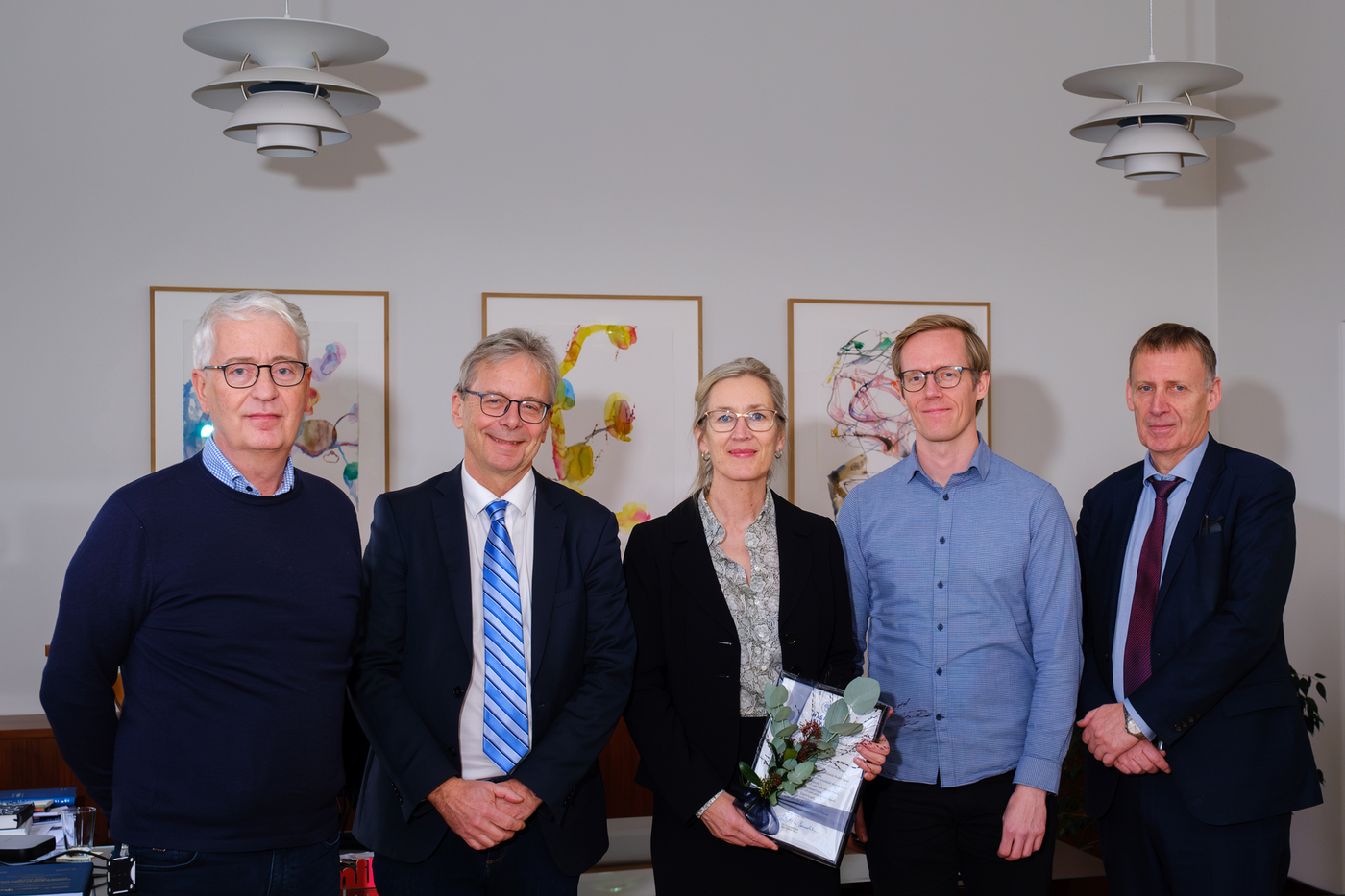Three grants for research on neural controlled prosthetic limbs have been bestowed by the Össur and Ottobock Research Trust Fund at the University of Iceland. This is the first time allocations are made from the fund, and the combined amount of the three grants is 117 million ISK/850.000 USD
A few years ago, the prosthetic corporations Össur And Ottobock combined forces and created the fund at the University of Iceland. It is intended to support scientific research and innovation projects in the field of advanced neural control of prosthetics. A call for proposals was published last year, and nine applications were received. The board elected three projects, which collectively received funding amounting to 850.000 USD, or about 117 million ISK.
Dr. Matija Strbac, Tecnalia Serbia Ltd. received a grant for the project “SockEET – Smart liner for high resOlution Control and feedbacK based on Embedded Electrodes.” Dr. Strbac´s research team is developing equipment aimed at improving information transfer between the user and the prosthetic. There are novel technologies for producing functionalized textile base devices that can have desired properties of stretchability, adhesion, and breathability, as well as incorporate a multitude of recording and stimulation electrodes that would allow significant increase of the information bandwidth. Dr. Strbac and his team are at the forefront in this technology and their preliminary research has shown promising results, but they have yet to clinically test the benefits of the developed technology. The project will produce prototypes to enable high bandwidth control and feedback and test them both outside and inside the socket. In the latter case, amputees will use a prosthesis with an embedded interface to perform various tasks. The objective is to test functionality, durability, and robustness of the device.
Professor Herman van den Kooij with the Delft University of Technology, was awarded a grant for the project “Closed loop control of a powered ankle prosthesis using neuromusculoskeletal modelling and artificial sensory feedback (PERSONIFY).” During locomotion, the intact human ankle joint is dominant in propulsion and important in balance control and adaptation to different terrains. Volitional control of a powered ankle prosthesis by residual muscle activity has the potential to restore this function after amputation. Van den Kooij and colleagues have worked on a project called Simbionics, wherein a human-machine interface (HMI) has been developed. The HMI uses a personalised neuromusculoskeletal model of the intact limb to virtually recreate the neuromechanics of the missing limb and then reproduce its state by the prosthesis. The grant will support further development of this technology, including the required hardware and software changes to allow for experiments outside the lab with individuals who have lost their leg below the knee. The studies include both socket and bone-anchored prosthesis users.
Professor Kristín Briem with the department of physical therapy at the University of Iceland’s faculty of medicine was awarded a grant for the project “Prosthetic leg with intent control and sensory feedback.” The projects’ primary objective is to design, build, and test a prosthetic foot and knee-system with myoelectric intent control with sensory feedback for individuals who have lost their leg above the knee. The users will be able to adapt the available mobility through the leg and foot to various tasks and situations. Key aspects of the project include interdisciplinarity and user-guided development. The focus on individual needs in development and training protocols will enable the user take advantage of and train the device with resulting improvements in mobility, balance, safety, comfort, and long-term health related quality of life. For this to be achieved, the user’s needs from the device, as well as their preferences for proposed intent control and sensory feedback must be identified and quantified.
More about the fund
The objective of the of the Össur and Ottobock Research Trust Fund is to fund scientific research and innovation projects in the fields of advanced neural control of prosthetics. It was founded at the University of Iceland using financial contributions from Össur and Ottobock, two of the world’s leading companies in the field of prosthetics. The international competitive fund is open to both scientists and students involved in research at universities, research institutes, and corporations across the globe.
Össur was founded in Iceland in 1971 and is based in Reykjavík. Ottobock was founded in Germany in 1919 and is based in Duderstadt. Through the creation of the fund, both companies wish to promote the development of high-quality technology used to increase people’s mobility and quality of life.
On the funds’ board sit Þorvaldur Ingvarsson, president of the board and representative of the University of Iceland, Ebba Þóra Hvannberg, representing the University of Iceland, Hildur Einarsdóttir representing Össur, Andreas Hahn representing Ottobock, and Rögnvaldur Sæmundsson, board stand-in.




